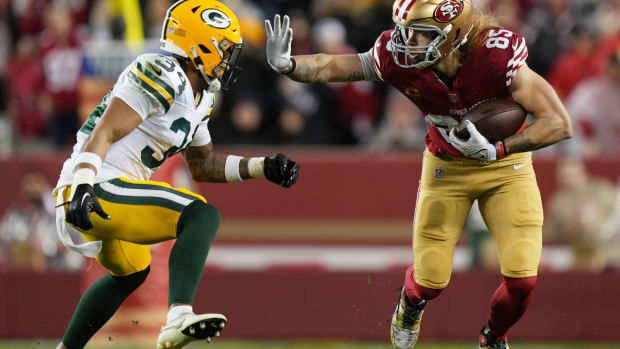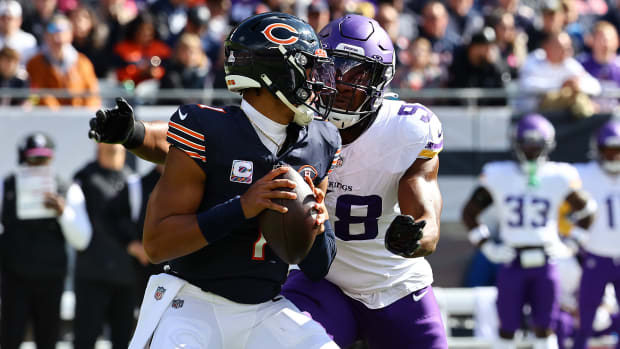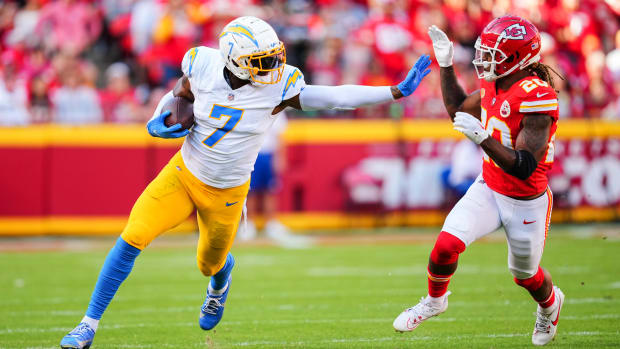Too Many Assumptions Left Bears Offense in Disarray
As a young writer, one of my first exposures to covering professional sports was to track down quotes in the New York Yankees locker room at a White Sox game.
There in the corner talking with seven or eight reporters was the hero of the day for the Bronx Bombers, Mr. October, Reggie Jackson.
Jackson's contribution this day had nothing to do with his bat. He thwarted a rally with a diving catch after he'd been doing almost nothing at an advanced playing age but serve as designated hitter.
A New York reporter said he assumed Jackson was only going to be DH now.
Jackson answered loudly: "There's your problem, you assume. When you assume, you make an 'ass' of 'U' and me."
Reporters laughed, as did Jackson after he repeated this old saying.
The Bears this season were guilty of assuming too much and have paid the price.
Their reward is two weeks of meaningless football and an offseason of retooling in desperation to fix mistakes -- if this is possible.
Here were the main false assumptions:
1. Level 200
Obviously Matt Nagy assumed Mitchell Trubisky was at a higher level and tried convincing everyone else of this by saying he'd be operating the 200 level of his offense. This was easily the biggest false assumption the Bears made. Flaws were fairly apparent last year despite Trubisky making the biggest passer rating improvement in the league. His downfield passing was entirely erratic. His reading of defenses appeared insufficient. They based the thought he was ready for the 200 level offense on all the offseason work done. There was no game experience supporting this thought, beyond his playing time last year. Then Trubisky didn't play in preseason, so on opening night he's ready for the 200 level based only on assumption.
The air quickly went out of that tire.
2. Offensive Line Switch
Because James Daniels played center in college and Cody Whitehair was a college guard, they assumed they could flip them to their "natural" positions and improve the line blocking. It didn't work on opening night as Packers defensive lineman Kenny Clark wrecked the interior of their line.
Then they moved Daniels back to left guard at midseason and Whitehair from guard back to center. Clark still wrecked their blocking last Sunday in a do-or-die game at Green Bay. By then, they'd ruined any chance for offensive line continuity with the switching.
They should have left well enough alone when they had an experienced Pro Bowl center in Whitehair, who knew how to make the line calls adjusting the blocking scheme to the defensive front.
The running game has failed and this assumption was a key reason.
3. Healthy At Last
Kyle Long was going through his first entirely healthy offseason in three years and would be entirely ready for training camp and the season, this assumption went.
He was their best blocker and an offensive leader.
Actually he was never healthy and it showed in his play. He went on IR with a vague hip/back injury and his future in Chicago is cloudy at best.
The Bears also assumed they had the guard spots covered depth-wise. Instead, they wound up playing Rashaad Coward at a key run-blocking spot. He's a converted defensive lineman and undrafted free agent. They brought Ted Larsen in as a backup but used Coward, who hasn't excelled.
This assumption is another key reason the running game failed.
4. Still Not Healthy
Trey Burton had to be healthy and ready to go by training camp after getting sports hernia surgery in early spring, didn't he? He wasn't. He never gained 100 percent strength and explosiveness, then was said to have suffered another groin injury in preseason and finally a calf injury to go on IR.
The Bears had plenty of time in the offseason to bring in an adequate stop-gap replacement but never did, assuming Burton would be healthy.
Burton was judged the best run-blocking tight end in the league by Pro Football Focus last year, and it's not even his greatest strength. Still, his ability to arrive at the point of attack and deliver a springing block was big for the running game.
His hands, agility and speed made him crucial for extending drives as a receiver. And the Bears had no one who could adequately fill the role.
5. Division II
Adam Shaheen came out of Division II ball, and injuries his first two years limited his playing time at the critical Y-tight end spot on the line.
So the Bears still assumed he's a starting-level player and didn't upgrade their depth in case they're wrong or unhealthy once again. Or Both. Both happened. Shaheen went on IR after a third non-productive year. He's close to becoming the new Kevin White.
They need at least one or two tight ends now before they can move forward next year in this offense.
Twitter@BearsOnMaven




